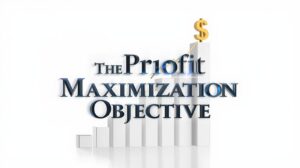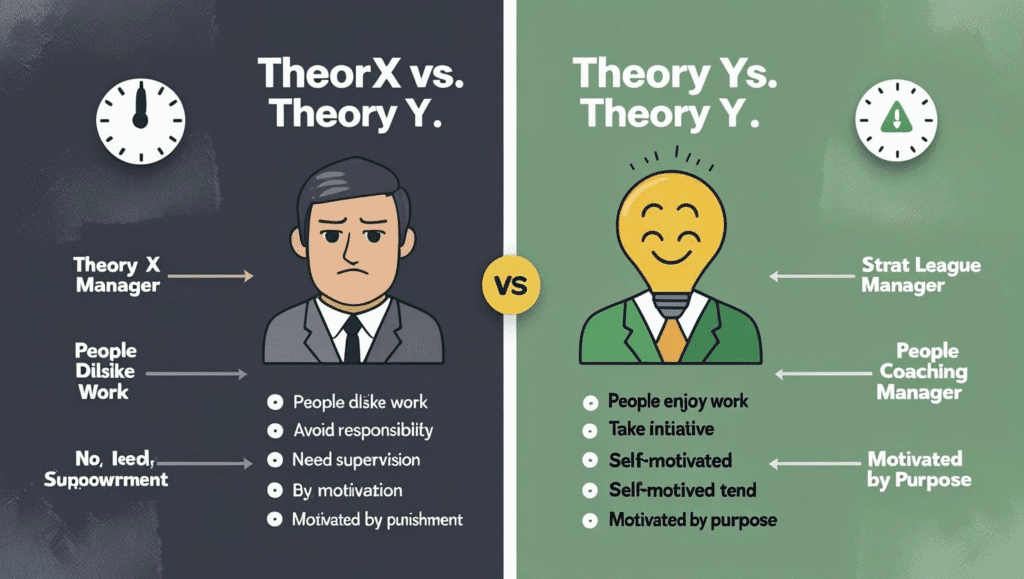The Profit Maximization Objective: A Cornerstone of Business
Profit maximization is one of the most fundamental and traditionally accepted objectives of a business. In its simplest form, it is the process by which a company determines the price, input, and output levels that lead to the highest possible total profit. It is the financial engine that drives growth, innovation, and shareholder returns, serving as a primary measure of a company’s success and efficiency.
The Core Principle: Where Marginal Revenue Equals Marginal Cost
From the perspective of classical economics, the rule for maximizing profit is both elegant and precise. A firm achieves maximum profit at the level of output where its marginal revenue is equal to its marginal cost. Understanding this rule requires defining these two critical terms:
- Marginal Revenue (MR): This is the additional revenue a company generates from selling one more unit of a product or service.
- Marginal Cost (MC): This is the additional cost incurred by the company to produce one more unit of that product or service.
As long as the revenue from selling one more unit (MR) is greater than the cost to make it (MC), the company’s total profit increases. The moment the cost to make one more unit exceeds the revenue it brings in (MC > MR), the company starts losing money on that unit. Therefore, the “sweet spot” for maximum profit is the exact point where they are equal.
Marginal Revenue (MR) = Marginal Cost (MC)
A Balanced View: The Arguments For and Against
While profit maximization is a powerful driver, it is not without its critics. A modern understanding of business objectives requires a balanced view, acknowledging both its significant advantages and its notable limitations.
Why Pursue Profit Maximization?
- Measures Efficiency: Profit is a reliable yardstick for a firm’s operational efficiency. Higher profits often indicate that a company is using its resources effectively and managing its costs well.
- Key Source of Finance: Retained profits (earnings not paid out as dividends) are a vital, low-cost source of funds for growth, research and development (R&D), and expansion, reducing reliance on debt or new equity.
- Allocates Resources: In a market economy, the pursuit of profit naturally allocates resources to where they are most desired by society. High profits in an industry attract new investment and competition, leading to more production of goods and services that consumers want.
- Maximizes Shareholder Returns: For the owners of the business (shareholders), profit is the primary source of their return on investment, delivered through dividends and appreciation in the company’s stock value.
- Drives Economic Growth: Profitable companies are the engines of economic prosperity. They expand operations, create jobs, invest in new technologies, and contribute higher tax revenues to the government.
The Criticisms and Limitations
- Ignores Time Value of Money: The model treats a dollar earned today as equal to a dollar earned a year from now, which is fundamentally untrue. It doesn’t account for the fact that money can be invested and earn a return over time.
- Fosters Short-Term Thinking: An aggressive focus on maximizing this year’s profit can lead managers to make decisions that harm long-term prospects, such as cutting R&D, neglecting employee training, or delaying essential maintenance.
- Overlooks Risk: Profit maximization does not explicitly factor in the risk associated with generating those profits. A project with a very high potential profit might also carry a cripplingly high risk of failure.
- Ambiguity of “Profit”: The term “profit” can be ambiguous. Does it mean accounting profit or economic profit? Short-term or long-term profit? Different definitions can lead to different business decisions.
- Potential for Social & Ethical Neglect: An unchecked pursuit of profit can incentivize companies to cut corners on product safety, environmental protection, or employee welfare, leading to significant negative social consequences.
The Modern Alternative: Shareholder Wealth Maximization
Recognizing the limitations of pure profit maximization, modern financial management has largely adopted a more sophisticated and robust objective: shareholder wealth maximization. This goal is defined as maximizing the market price of the company’s common stock.
This objective is considered superior because it cleverly addresses the flaws of profit maximization:
- It is inherently long-term in nature, as stock prices reflect the market’s expectation of future earnings.
- It accounts for the time value of money by discounting future cash flows.
- It incorporates risk, as investors will demand a higher return (and thus pay a lower price for stock) from riskier companies.
In this modern view, profit maximization is not discarded; rather, it is seen as a necessary but insufficient condition for achieving the ultimate goal of maximizing shareholder wealth.
Conclusion: A Foundational, Yet Incomplete, Objective
The profit maximization objective remains a cornerstone of business theory and practice. It provides a clear, measurable, and powerful incentive for efficiency and resource allocation. However, its limitations—particularly its short-term focus and neglect of risk and the time value of money—mean that it cannot be the sole objective of a modern, sustainable enterprise. Today’s most successful businesses view profit maximization as a critical means to an end, with that end being the long-term, risk-adjusted creation of value for shareholders and, increasingly, for all stakeholders.
Frequently Asked Questions
Profit maximization itself is not inherently unethical; it is a neutral financial objective. However, the *unrestrained* pursuit of it can lead to unethical behavior if it is not balanced with legal, ethical, and social responsibilities. A company that pollutes a river to save on waste disposal costs is unethically pursuing profit. A company that innovates to create a better product at a lower cost is ethically pursuing profit. The ethical dimension depends on *how* the profit is achieved.
Accounting Profit is the number you typically see on an income statement. It is calculated as Total Revenue minus Explicit Costs (like wages, rent, and materials). Economic Profit is a broader concept. It is calculated as Total Revenue minus both Explicit Costs *and* Implicit Costs (the opportunity costs of using the firm’s resources). For example, the salary the owner could have earned working elsewhere is an implicit cost. A business can have a positive accounting profit but a negative economic profit.
A small business can apply the principle intuitively. Instead of complex calculus, the owner can ask simple questions: “If I stay open one more hour, will the sales I make (marginal revenue) be more than the cost of electricity and paying my staff for that hour (marginal cost)?” or “If I produce one more batch of cookies, will the revenue from selling them cover the cost of the ingredients and my time?” This thinking helps make decisions “at the margin” to move towards maximizing profit, even without precise data.


